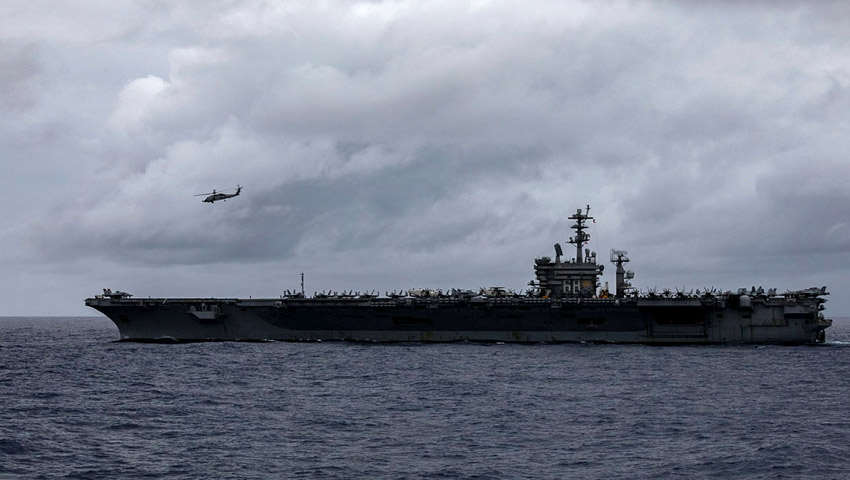A Royal Australian Navy MH-60R Romeo embarked on HMAS Ballarat has played a valuable role with the US Navy’s Nimitz Carrier Strike Group during a passage exercise in the Indian Ocean.
Following the successful conclusion of Exercise Malabar, which brought together the navies of India, Japan, the US and Australia, HMAS Ballarat's embarked MH-60R Romeo supported US Ships Nimitz, guided-missile destroyer Sterett and guided-missile cruiser Princeton while embedded in Carrier Air Wing 17.
Commanding Officer Ballarat Commander Antony Pisani said the Australian and US ships and aircraft operated together for several days, illustrating their maritime capabilities and promoting a secure and prosperous Indo-Pacific.
“This activity was a highlight for the 187 men and women in Ballarat. For many, it was the first time they had seen a US Navy aircraft carrier. It was a delight watching the team's awe as fighter jets were launched from the carrier, illustrating to many the precision of carrier based air operations,” CMDR Pisani said.
The Australian helicopter, of 816 Squadron Flight 3, operated with US Navy MH-60R and MH-60S helicopters.
CMDR Pisani added, “The participation of Ballarat's embarked MH-60R helicopter, which was operating within the Strike Group, demonstrates our shared mutual trust and respect, and the close bonds between our navies and nations.”
Ballarat’s MH-60R contributes to surface and sub-surface surveillance, which enhances the tactical picture beyond the visual horizon, compiling data from active and passive sensors for the Carrier Strike Group and the Australian frigate.
Operations Officer for Flight 3 Lieutenant Patrick McGuire said these exercises validated the interoperability of Australian MH-60R flights within a Carrier Strike Group.
“Our daily exercise tasking, to defend the carrier through airborne force protection sorties, demonstrates the trust the Carrier Strike Group Commander has placed in our aircraft, aircrew and technical sailors to maintain the recognised maritime picture in all weather, day and night,” LEUT McGuire said.
He added, “The surveillance serves to locate, identify, track and investigate potential threats to maritime security. The MH-60R is a force multiplier and provides a crucial link between the Carrier Strike Group assets, such as their fighter jets, maritime patrol aircraft, airborne early warning aircraft and surface units. MH-60R Flights will continue to be an integral capability within the task group construct and joint operations.”
HMAS Ballarat is a long-range frigate capable of air defence, surface and undersea warfare, surveillance, reconnaissance and interdiction. Ballarat's combat capabilities have been significantly improved under the Anti-Ship Missile Defence upgrade program, which provided an enhanced sensor and weapons systems capability.
The MH-60R is equipped with a highly sophisticated combat system designed to employ Hellfire air-to-surface missiles and the Mark 54 anti-submarine torpedo. The primary missions of the 'Romeo' helicopter is anti-submarine warfare and anti-surface warfare.
Secondary missions include search and rescue, logistics support, personnel transport and medical evacuation.
The MH-60R and its mission systems replaced the fleet’s S-70B-2 Seahawk aircraft, which retired from service on 1 December 2017.
The Australian government approved the acquisition of 24 MH-60R Seahawk ‘Romeo’ naval combat helicopters at a cost of over $3 billion. The helicopters are largely military off-the-shelf built by Sikorsky and Lockheed Martin, and were acquired through the foreign military sales process from the US Navy.
Navy will have the capacity to provide at least eight warships with a combat helicopter at the same time, including Anzac Class frigates and the new air warfare destroyers.
The remainder will be based at HMAS Albatross in Nowra, NSW, and will be in various stages of the regular maintenance and training cycle.



